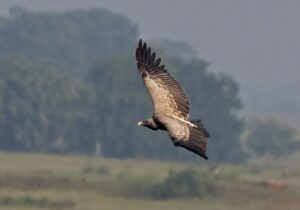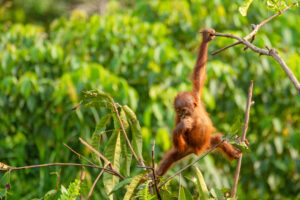A passion for the natural world drives many of our adventures. And when we’re not outside, we love delving into discoveries about the places we live and travel. Here are some of the best natural history links we’ve found this week.
The Harlem Hive-Trotters
Bees that play ball: Bumblebees are the first insect known to play. Scientists have recorded them rolling wooden balls, a behavior that doesn’t provide any benefit to the bees.
Researchers have witnessed birds and mammals playing but never insects.
In the experiment, wooden balls were set next to a feeding station filled with sucrose solution. The bees did not have to interact with the balls to access the food. Despite this, the 45 bees rolled the balls 910 times. Some bees returned repeatedly to play with the different colored balls.
Seaweed farms to combat climate change: Businessman John Auckland wants to use seaweed as a carbon capture system. Plants take in carbon dioxide from the atmosphere. Auckland believes that seaweed can absorb one gigatonne of CO2 (a billion tonnes) every year.
Using the ocean’s natural eddies, his team will use the movement of the water to create a 55,000 sq km sargassum seaweed farm in the South Atlantic between Africa and South America. The ocean gyres collect plastics in their center, and he believes he can achieve the same result with seaweed.
He plans to use pipes to bring nutrient-rich water to the surface, helping the seaweed grow. “The gyre just stops the sargassum from escaping,” Auckland explained.
Currently in the testing phase, the project should be active by 2026.
Disappearing peccaries
White-lipped peccaries reappear in Latin America: White-lipped peccaries live in tropical forests in Central and South America. But it baffled observers when the pig-like animals disappeared in nine countries, then subsequently reappeared.
Researchers believe that this may be the first documented case of population cycles in a neotropical mammal. The species seems to have a 20 to 30-year population cycle, with 7 to 12-year troughs when the peccaries vanish almost entirely.

Geckos are a type of squamate reptile. Photo: Shutterstock
The origins of lizards: Scientists have unearthed a 166-million-year-old lizard skeleton on the Isle of Skye in Scotland.
The tiny skeleton is six centimetres long and the most complete lizard fossil of its age ever found. It dates to the time of the dinosaurs. Scientists say that it is “filling gaps in our understanding of evolution and the history of life on Earth”.
The Bellaisia Gracilis is a type of squamate reptile, the group includes over 10,000 species, including geckos and chameleons. They originated 240 million years ago but very few fossils exist to track their evolution. Analysis of the Isle of Skye fossil suggests the species was the stem of the squamate family tree, long before the origin of modern species.
Cougars don’t like you
Cougars driven to extremes by wildfires: In 2018, wildfires tore through Los Angeles. The effects of the fire are still impacting cougars.
Los Angeles and Mumbai are the only megacities that have big cats living within the city boundaries. The cougars of LA have been closely studied for two decades with GPS collars. The solitary animals roam around the Santa Monica Mountains, the Santa Susana, and the Santa Anas. Their movements before and after the Woolsey fire are very different. The cougars now avoid half of their previous habitat. It was reduced to ash in the fires.
The smaller habitat has pushed increasing numbers of cats to attempt highway crossings. Vehicles have struck and killed seven tagged cougars this year. Cougars now attempt to cross a 10-lane highway once every four months. Before the fires, cougars only attempted this once every two years.
“A lot of people had the idea that after the Woolsey Fire, mountain lions would just start pouring out into the urban landscape,” said biologist Rachel Blakey. “It just goes to show to what lengths they go to avoid encountering humans. They’d rather run across a 10-lane freeway than hang out with you.”

Photo: Shutterstock
Singing turtles
Secret sounds of sea creatures ‘talking’: Sea animals previously thought to be silent can communicate. One scientist used microphones to capture the sounds of 53 sea animals including turtles, tuatara, lungfish, and a caecilian — a kind of wormy amphibian.
Certain sounds went with particular behaviors. A key finding was that sea turtles can communicate from within their eggs. The soon-to-be hatchlings will sing from within their eggs to synchronize hatching. This could help their chances of survival. The more turtles that hatch at one time, the higher the odds that an individual makes it to adulthood.






